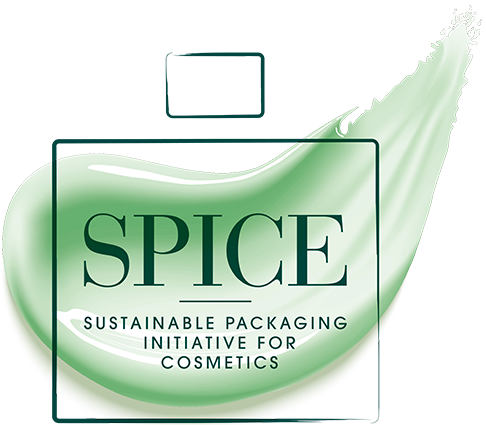Insights
How to solve the conundrum of matching circularity and reduced environmental impact?
IN BRIEF
+ SPICE defines packaging eco-design as minimizing environmental impact while maximizing circularity. Both are intertwined and often go together; still some designs may reveal trade-offs.
+ Recent regulatory evolutions set thresholds for packaging circularity, while environmental impact reduction remains at the discretion of companies.
+ Adopting a science-based, holistic approach is crucial to maximize synergies between both. To help packaging designers, SPICE released its Ecodesign & Circularity Guide, which studies the Material Circularity Indicator (MCI) in addition to Life Cycle Analysis (LCA) metrics.
+ SPICE advises to always consider environmental impact reduction alongside circularity, selecting designs that optimize both aspects while minimizing trade-offs and remaining compliant with regulations.
+ To empower designers, SPICE will integrate the MCI as an additional circularity indicator in the SPICE Tool.
Embedding ecodesign in companies’ strategy is a journey, with each step driving innovation while moving towards an economy that is aligned with planetary boundaries. SPICE’s definition of ecodesign is an optimal design that minimizes environmental impact while maximizing circularity1. Designers need to consider all these parameters, while at the same time making sure products are still desirable for customers, profitable for the brand, and that packaging performs its primary function of protecting and adequately delivering the product.
Design conundrum
While it is true that improved circularity and lower environmental impact often go together, there may sometimes be trade-offs, compromises of which designers and companies need to be aware before launching new packaging. Take a newly designed packaging option that has improved recyclability but a heavier weight as compared to a previous option.. While it may improve disposal at end-of-life, thus increasing the product’s circular credentials, it still poses problems around increased emissions associated with the packaging materials’ production and transportation. This is where SPICE guides cosmetics packaging designers to solve this conundrum, also conscious of the growing number of new packaging legislation.
Recent legislation confirms SPICE orientations
In Europe, the new Packaging and Packaging Waste Regulation (PPWR) focusing on circularity is about to come into force. The Ecodesign for Sustainable Products Regulation (ESPR) legislation, recently adopted, is on the horizon too. This proposed law aims to establish criteria that will make safe and sustainable products the standard in the EU market, focusing on carbon and environmental footprint. Brands also need to be aware of changes outside Europe. Some US states such as California have significantly overhauled packaging law, with a particular emphasis on single-use packaging, while Australia has set new circularity targets through the Australian Packaging Covenant Organisation (APCO).
Two sides of the same coin
SPICE believes that environmental impact and circularity need to be seen as two sides of the same coin. The initiative developed an Ecodesign & Circularity Guide where SPICE LCA indicators, aligned with the EU Product Environmental Footprint (PEF) methodology, are coupled with a circularity metric developed by the Ellen MacArthur Foundation: the Material Circularity Indicator (MCI)2. It is important to note that the SPICE LCA indicators already embed key circularity parameters, notably refill/reuse and recycling benefits assessment, through the Circular Footprint Formula. However, this guide allows packaging designers to look at the question from both angles and access a comparative overview.
A case study included in the guide perfectly demonstrates the conundrum that designers can face. It compares the design of five shampoo bottles, each using a combination of different materials, including aluminum and Recycled Polyethylene Terephthalate (RPET). While SPICE indicators showed that the single use aluminum bottle had the highest environmental impact, the MCI metric showed that it was the best option of the five in terms of circularity. However, the same case also showed that SPICE indicators and MCI can move in the same direction, such as in the recycled PET bottle or PET bottle with one refill cycle scenarios, combining both low environmental impact as well as high levels of circularity. In this example, high emissions and energy-intensive manufacturing gave the aluminum bottle the worst carbon footprint; should it be reused or integrate recycled content, the outcome could shift.
SPICE promoting holistic design strategies
This is why SPICE recommends always considering the reduction of environmental impact using SPICE LCA indicators alongside circularity, and identifying the optimal designs that maximize both aspects, while ensuring compliance with regulatory requirements and each company’s environmental strategy. To help designers address the conundrum in practice, SPICE has chosen to integrate the MCI as a complementary indicator to its LCA metrics in the SPICE Tool over the coming months. This strategic move aims to empower companies in reconciliating their efforts on circularity with improving their packaging environmental portfolio performance.
This SPICE Insight is a summary of the SPICE Ecodesign & Circularity Guide. The full guide contains further case studies and full methodological details.
—-
1 According to the Ellen MacArthur Foundation (EMF), in a circular economy, products and materials are kept in circulation through processes like reuse and recycling
2 The Material Circularity Indicator (MCI) is a free Excel-based tool developed by the Ellen MacArthur Foundation (EMF) for measuring how circular the material flows of a product are. It includes an assessment of:
· Inputs (what the product is made of and where those components come from)
· Outputs (what happens at the end of the product’s life) More information and resources can be found on the EMF’s website.
